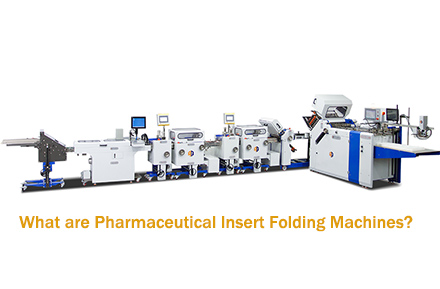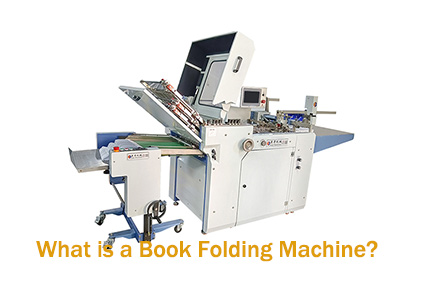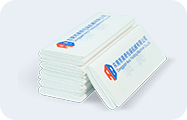Automatic paper folding machines are marvels of engineering that transform stacks of flat sheets into neatly folded documents with remarkable speed and accuracy. From simple letter folds in an office to complex brochures in a high-volume print shop, these machines eliminate tedious manual labor and ensure consistent, professional results. Let's unfold the mechanics behind them and explore their capabilities.
The Mechanics Behind Automatic Paper Folding Machines
1. Paper Feeding System
The process begins with the paper feeding system, which is responsible for introducing the paper into the machine. This system typically consists of a stack of paper placed on a tray, along with mechanisms to separate each sheet and feed it into the folding unit. Sensors are often used to detect the presence and position of the paper, ensuring a smooth and continuous feeding process. For example, vacuum suction cups or friction rollers may be employed to pick up and transport the paper sheets one by one, preventing jams and misalignments.
2. Folding Mechanism
The heart of an automatic paper folding machine is the folding mechanism, which can vary depending on the type of machine and the desired fold. Common folding mechanisms include:
Paddle Folding: In this mechanism, a series of paddles or blades guide the paper through a set of folding plates. As the paper moves forward, the paddles push it into the folding plates, creating a precise fold. This is suitable for making parallel folds, such as those used in brochures and leaflets.
Knife Folding: A knife is used to push the paper into a folding jaw, which then creases the paper at the desired location. Knife folding is often used for more complex folds, such as cross-folds or Z-folds, where the paper needs to be folded in multiple directions.
Belt Folding: Belts with specific configurations are used to grip and guide the paper, creating folds as the paper passes through the belt system. This method is suitable for delicate or thin papers, as it minimizes damage to the material.
3. Drive and Control System
The drive system provides the power to operate the various components of the folding machine. It usually consists of motors, gears, and belts that transmit motion to the paper feeding system, folding mechanism, and other parts. The control system, on the other hand, manages the entire operation of the machine. It can be a simple mechanical control or a more advanced computerized system that allows for precise adjustment of folding parameters, such as fold length, position, and number of folds. Modern machines often use programmable logic controllers (PLCs) or touch-screen interfaces for easy operation and customization.
What Types of Folds Can a Paper Folding Machine Create?
1. Parallel Folds
Parallel folds are the most common type of fold, where the folds are made in the same direction, parallel to each other. Examples include the single fold (folding a sheet in half), the double parallel fold (folding a sheet into three panels), and the accordion fold (multiple parallel folds like an accordion). These folds are widely used in leaflets, brochures, and flyers, as they allow for easy distribution and display of information.
2. Cross Folds
Cross folds involve folding the paper in two different directions, usually at right angles to each other. For example, a sheet can be first folded horizontally and then vertically, creating a more compact and complex structure. Cross folds are commonly used in maps, newspapers, and large-format documents, as they help to reduce the size of the paper while maintaining the integrity of the content.
3. Z-Folds
Z-folds, also known as concertina folds, are created by making a series of alternating folds in the same direction, resulting in a zigzag shape. This type of fold is often used in menus, programs, and brochures that need to be opened and closed easily, as it provides a smooth and flexible structure.
4. Specialized Folds
In addition to the standard folds, automatic paper folding machines can also create specialized folds for specific applications. For example, envelope folds are used to create envelopes by folding the sides and flaps of the paper, while map folds are designed to fold large maps into a compact size for easy storage and handling. Some machines can even create decorative folds, such as scalloped or curved folds, to enhance the aesthetic appeal of the paper produc.
Folding Machine Types
360T/480T Automatic paper folding machine
AOQI 360T/480T paper folding machines are designed for various paper with small format.For your folding needs , it can be connected with AOQI independent knife for the final cross fold and the vertical stacker to collect the folded products orderly.
Max. infeed paper size: 360*1000mm / 480*1000mm
Mini. infeed paper size:50*100mm
Paper weight : 30-250g
Max. folding speed: 200m/min
Mini. folded size: 20*50mm
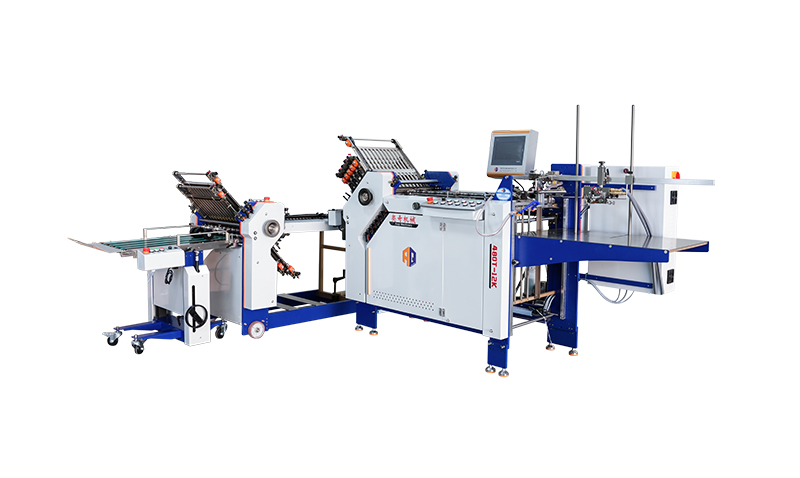
The 530TS Book folding machine is largely utilized for folding various kinds of paper sheets and is especially design for wide-ranging booklet folding. It can be specified with six plates in the second station or independent knife folding unit in the second or third station.
Max. infeed paper size:530*1000mm
Mini. infeed paper size:70*120mm
Mini. folded size:22*70mm
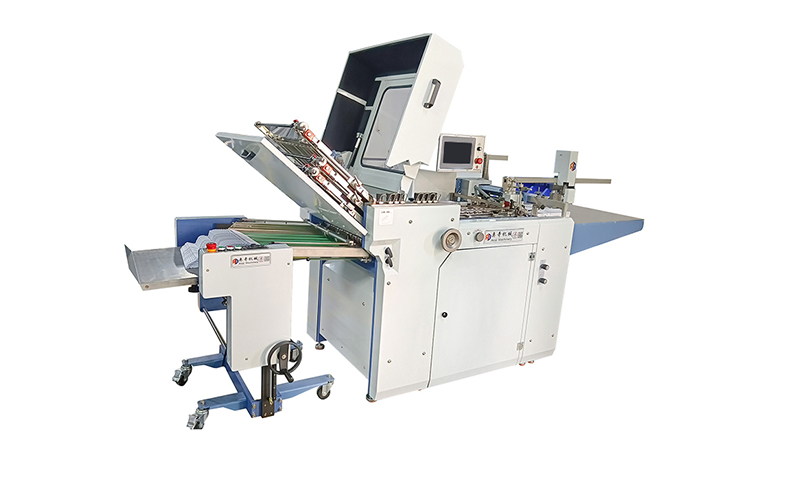
760TS Combi paper Folding Machine
The 760TS is AOQI’S new combi folding machine.It is designed for full size to 16p or 32p paper sheet , signature ,flyers or others various books. There are pallelt feeder and continuous feeder for your choice. The first station is with 4 buckle plate for parallel fold or first fold . The knife is equipped with independent servo motor.
Max. Infeed paper size :760*1080mm
Mini. Infeed paper size :150*180mm
Max. folding speed :210m/min

Conclusion
Automatic paper folding machines are sophisticated systems that blend precise mechanics, material handling, and programmable control. By utilizing buckle plates, knives, and rollers in coordinated sequences, they efficiently transform flat sheets into a vast array of folded documents with unparalleled consistency. From compact desktop units handling daily office mailings to massive industrial combination folders producing intricate brochures, these machines are indispensable tools for achieving professional, efficient, and high-volume paper folding. Understanding the mechanics and the different types of folds and machines available allows users to select the perfect technology for their specific needs.
FAQs about paper folding machines
Q1: How to maintain the paper folding machine? What are the key points for daily maintenance?
A: Cleaning: Wipe the paper feed roller and folding parts with a soft cloth regularly to remove paper scraps and dust.
Lubrication: Add lubricating oil to the transmission gears, bearings and other parts according to the instructions.
Check the parts: Check whether the belts and gears are loose, whether the folding knife is worn, and replace the worn parts in time.
Q2: How to choose a folding machine that suits you?
A: Clear requirements:
Home / small office: choose manual or semi-automatic models, focusing on portability and cost-effectiveness.
Enterprise / mass production: give priority to fully automatic models, pay attention to folding speed (sheets/minute), multi-function compatibility.
Pay attention to parameters: maximum/minimum paper size, thickness range, number of folding styles, production capacity (such as 500 sheets/hour).
After-sales service: give priority to brands that provide warranty and on-site repair, especially industrial-grade equipment.
Q3: Common problems & fixes?
A:Jams: Adjust paper guides, reduce stack height, ensure correct paper weight.
Misaligned folds: Calibrate fold plates or replace dull blades.
Skipped folds: Check for debris or worn rollers.


